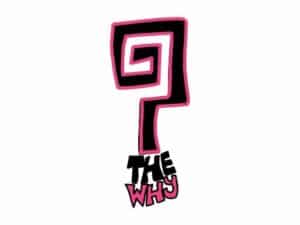Fostering a Creative Culture in the Classroom, Part 1 of 2
Guest Blog Post by Amy Burvall
What is the most creative thing you’ve ever done with students? Did it involve supplies commandeered from the art room, a lot of mess, and way too much time away from learning the curriculum?
There’s a lot of talk about how great creativity is, and how we need more of it from the classroom to the board room, from Kindergarten to the C Suite. Misconceptions about creativity abound – that it is equated with artistic talent, that some folks are just “born that way” and some will be lacking in that arena forever, that it is all about being utterly “original,” that it requires lots of freedom and time, and that it is immeasurable and unteachable.
Perhaps the most dangerous assumption is that creativity is distinct from knowledge – that to have creative learning environment based on inquiry, challenges, and projects one must abandon traditional, so-called “knowledge-rich” curriculum altogether.

Culture of Creativity
So how might educators reconcile these different pedagogical approaches, and how might we develop a CULTURE OF CREATIVITY in which students have multiple daily opportunities to demonstrate divergent thinking?

The first step is to unveil some truths about the nature of creativity and how it works. Creativity is the quintessential human trait – it’s how we got to where we are today as a species and it’s our hope for the future – we will have innovated our way out of existing global problems. Once people of any age get over the hump that creativity “is not just art” and understand that it is a birthright, inherent in everyone, then they realize they can practice and hone their personal creativity, much like you would a skill like cooking, piano, or football.

Creativity is a “TAO”… it’s a “way” of thinking, being, and looking at the world differently.
The more creative thinking strategies are embedded in our cultures (whether it be the classroom, home, or workplace), the more we are purposeful about practicing creativity – the more creative we will become. So yes, one CAN “teach” creativity to a certain extent, but it is probably more effective if creative strategies become ROUTINE, seamlessly integrated into daily life in the classroom.

CREATIVITY is CONTENT AGNOSTIC
This does not need to suck up a lot of time that could be spent learning things from the required curriculum – in fact, it DEPENDS on content. In Intention: Critical Creativity in the Classroom, my co-author Dan Ryder and I make the case that creativity is content agnostic. The 40+ “pathways” or ideas we offer truly can be used with any age group studying any discipline (even adults doing professional development in various areas!). They are content agnostic but at the same time, content dependent. Creativity is more about connecting disparate dots and remix than it is about generating brand-new ideas from the ether. And the “dots” we connect are metaphorical bits of knowledge students grow in their “dot forest” over time as they learn from observation, experience, and from us, their teachers.

The sweet spot then, is moving away from thinking of creativity as a separate skill, project, or time period – but rather,
juxtaposing CRITICAL THINKING, CREATIVE THINKING and CURRICULUM

SOMETIMES THE WAY OUT OF THE BOX IS VIA THE SHACKLES
In my own teaching and personal practice, I’ve discovered that creativity works best with constraints rather than freedom. Constraints can be time, resources, materials – you name it, but the one thing that must never be restricted is trust. Our creativity flourishes with “recipes” that serve as muses, but we must have the comfort of knowing we can riff, play, tinker, or fail without being ridiculed or admonished. The most important step in a creative classroom is establishing a respectful and safe classroom.

Sometimes, to break outside of the proverbial “box,” you might need….a wall! Here are three ideas that are so simple (and cheap!) you can start them tomorrow, yet offer endless opportunities for deep conversations and creative thinking. Consider embedding them into the students’ daily routine so that extend beyond a mere physical edifice – they become part of the culture.


Every time I hear this word, refrains from the quintessential 90’s band Oasis float in my head. You can call it something else- and it doesn’t need to even be a physical wall (I recently used the app Padlet to bring a wonderwall to the digital space). It might “rain wonders” if you ask students to write their queries on index cards and string them together with yarn, so that your classroom ceiling is “dripping” with interesting questions.

A few years ago I asked my daughter if she liked school, and she replied with the poignant “I do, but …
I have the answers to the questions they never ask.”
I inquired if she still had a wonderwall like they did in Kindergarten. No, she replied, with something to the effect of “we’re too old to wonder.” That very day I designated one of my bulletin boards as wonderwall area for my 17-18 year old students.

Kids are full of questions, but unfortunately we spend most of our school days seeking and giving answers rather than crafting and posing intriguing questions. Creativity is dependent on curiosity, but an even more powerful trait bolstered by the wonderwall is that creative thinkers tend to be OK with ambiguity. “Living in the question” is inherently uncomfortable, but the ability to do so – something the poet Keats deemed “negative capability” – is one of the most necessary mindsets in this increasingly unpredictable and exponentially changing world.


Designate a physical space in your classroom (or corridor, common room, etc.) for your Wonder Wall. It can certainly be a bulletin board with an inviting title, though you could do something more unexpected, like create frieze around the circumference of the room, use window space and glass markers (a Wonder Window?), or as aforementioned, dangle things from the ceiling. If you prefer to go digital, why not share a collaborative document (Google docs) or board space (Padlet), or wiki?
Decide whether you would like students to post anonymously or not (or perhaps the extreme opposite, and include student “selfies” with thought bubbles), and if you will have more structured times and themes for posting, or will it be any time for any reason? Other things to consider might be how to go about bringing attention to the questions and going about finding the answers to them (or at least discussing them if they are “unanswerable”).
I do really love the idea of older students working with younger students and investigating their questions. If you want to get experts involved, consider sharing your students’ questions on social media or with people working in the related fields. You could riff on the latter by titling your board “Ask an Architect” or “Ask a Writer.”
Stay tuned tomorrow for part two, the second and third simple ways to integrate creativity into your classroom culture!

Amy Burvall is a 25 year veteran educator, artist, and co-author of Intention: Critical Creativity in the Classroom (with Dan Ryder and EdTechTeam Press). She is well known for her “History for Music Lovers” YouTube channel, remixes, and whimsical pink and black graphic design. She is currently freelancing as a creativity consultant but is always looking for new opportunities and people to collaborate with. amyburvall.com / @amyburvall in all spaces









